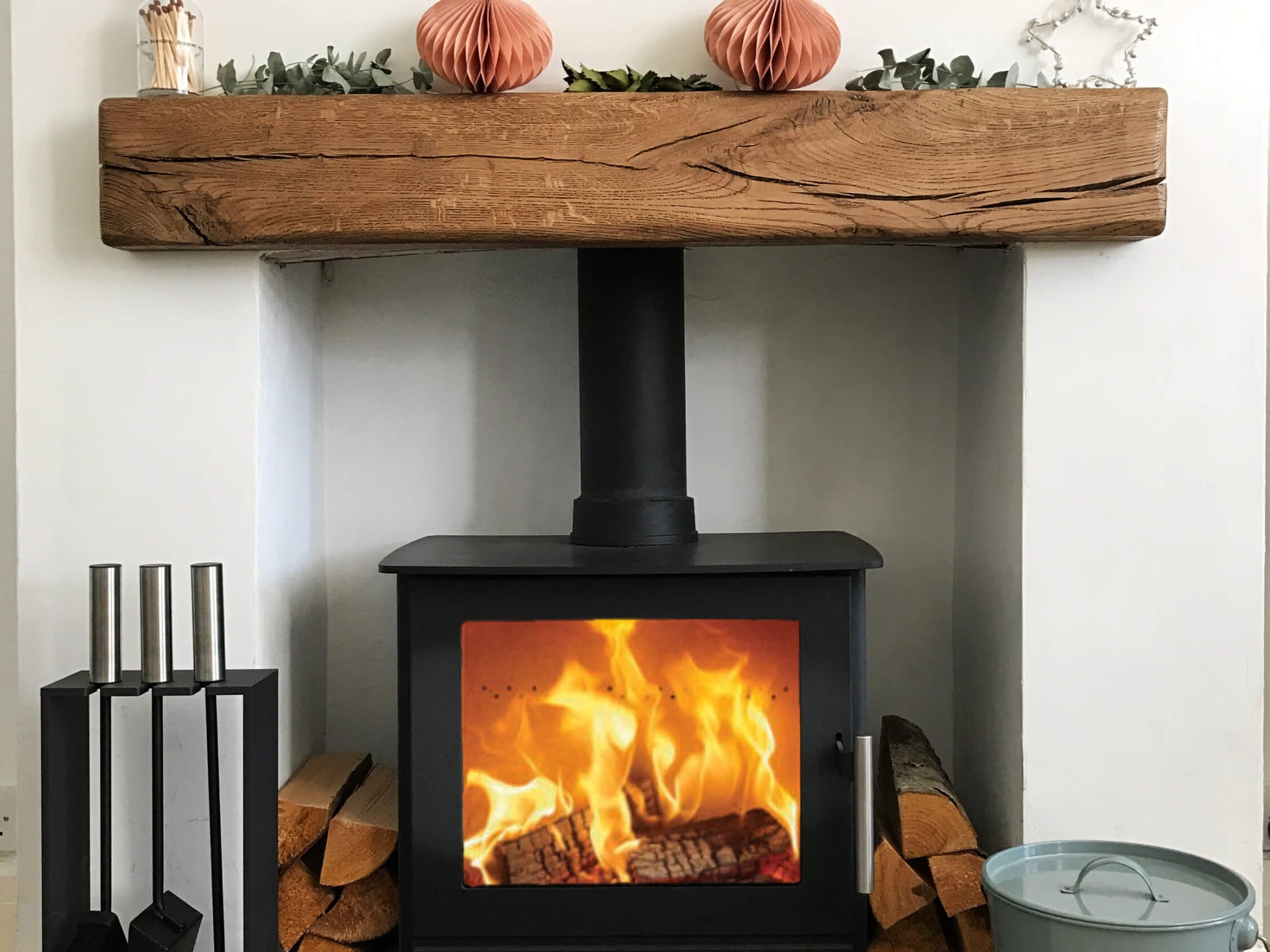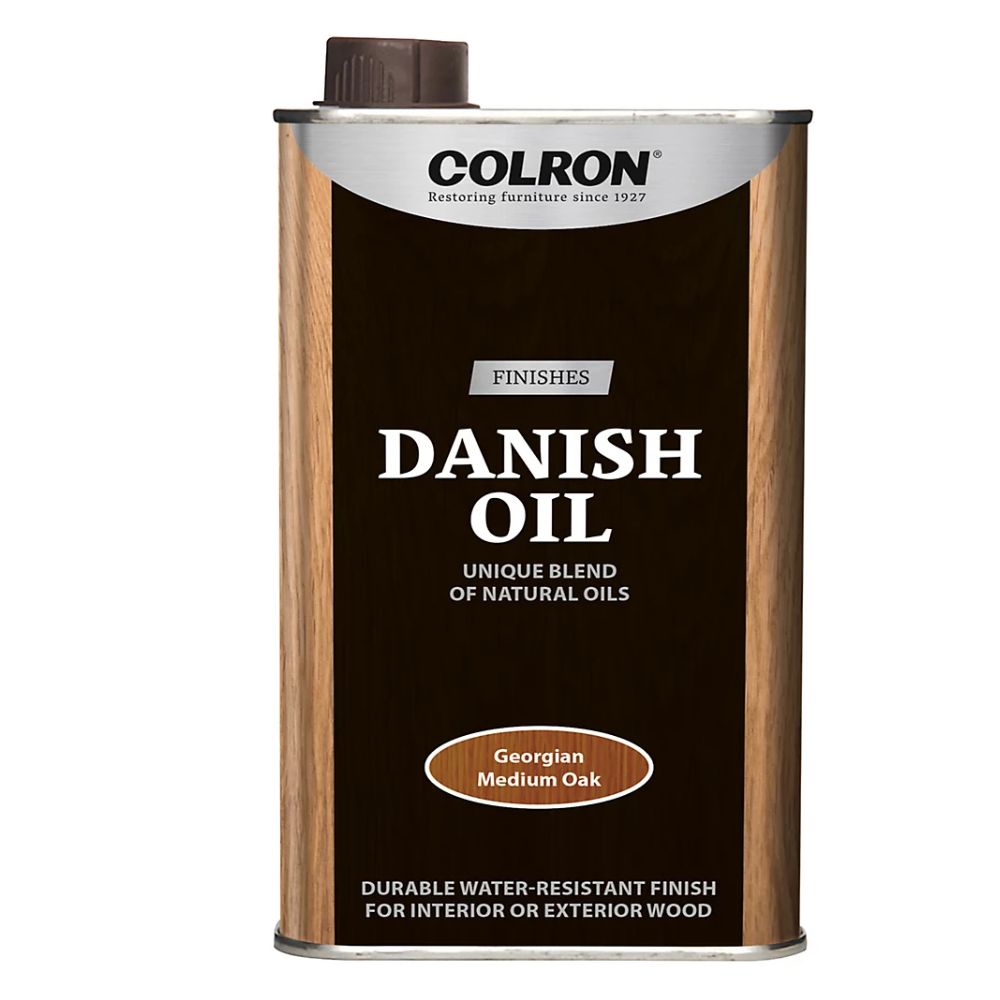10 oak beam fireplace ideas you’ll want to steal for the ultimate cosy home upgrade this season
From rustic reclaimed timbers to sleek floating mantels, these oak beam fireplace ideas prove there’s a style to suit every type of home
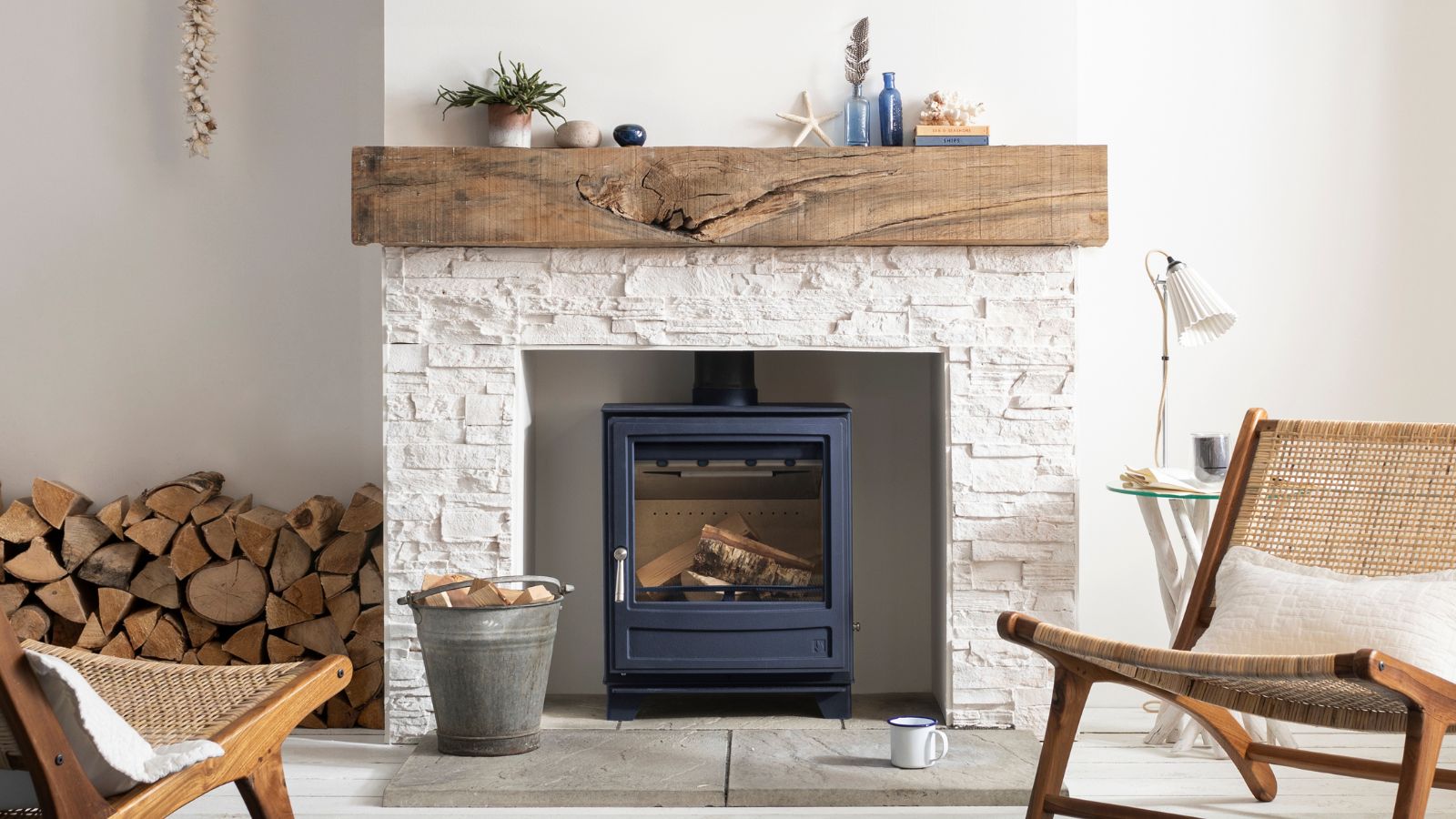
- 1. Reclaimed oak beams
- 2. Lean into traditional fireplace design
- 3. Choose a pale, sanded oak
- 4. Treat and seal an oak beam
- 5. Experiment with colour and faux oak beams
- 6. Mix rustic beams with modern stoves
- 7. Match your beam to other woodwork
- 8. Add a simple floating beam
- 9. Embrace natural edges
- 10. Pair a double-sided log burner with an oak beam
Few will deny there’s a certain charm to oak beam fireplaces. Part practical, part decorative, the beam anchors the room in a way that feels both comforting and characterful. It doesn’t matter if you opt for the rustic heft of reclaimed timber or the pared-back simplicity of a slim, modern finish – these classic fireplace ideas never seem to go out of style.
What makes oak so appealing is its ability to shape-shift with its setting. In a country cottage, it can lean into tradition, full of grain and weathered detail. In a newer build, it can be clean-lined and minimal, lending warmth without fuss.
But designing an oak beam fireplace isn’t just about picking the prettiest piece of wood and hoping for the best. Proportions matter, finishes make all the difference, and, crucially, so does safety. With expert insight and inspiring ideas, we’ll guide you through how to get it right so your fireplace becomes the inviting centrepiece it deserves to be.
1. Embrace rustic character with a reclaimed beam
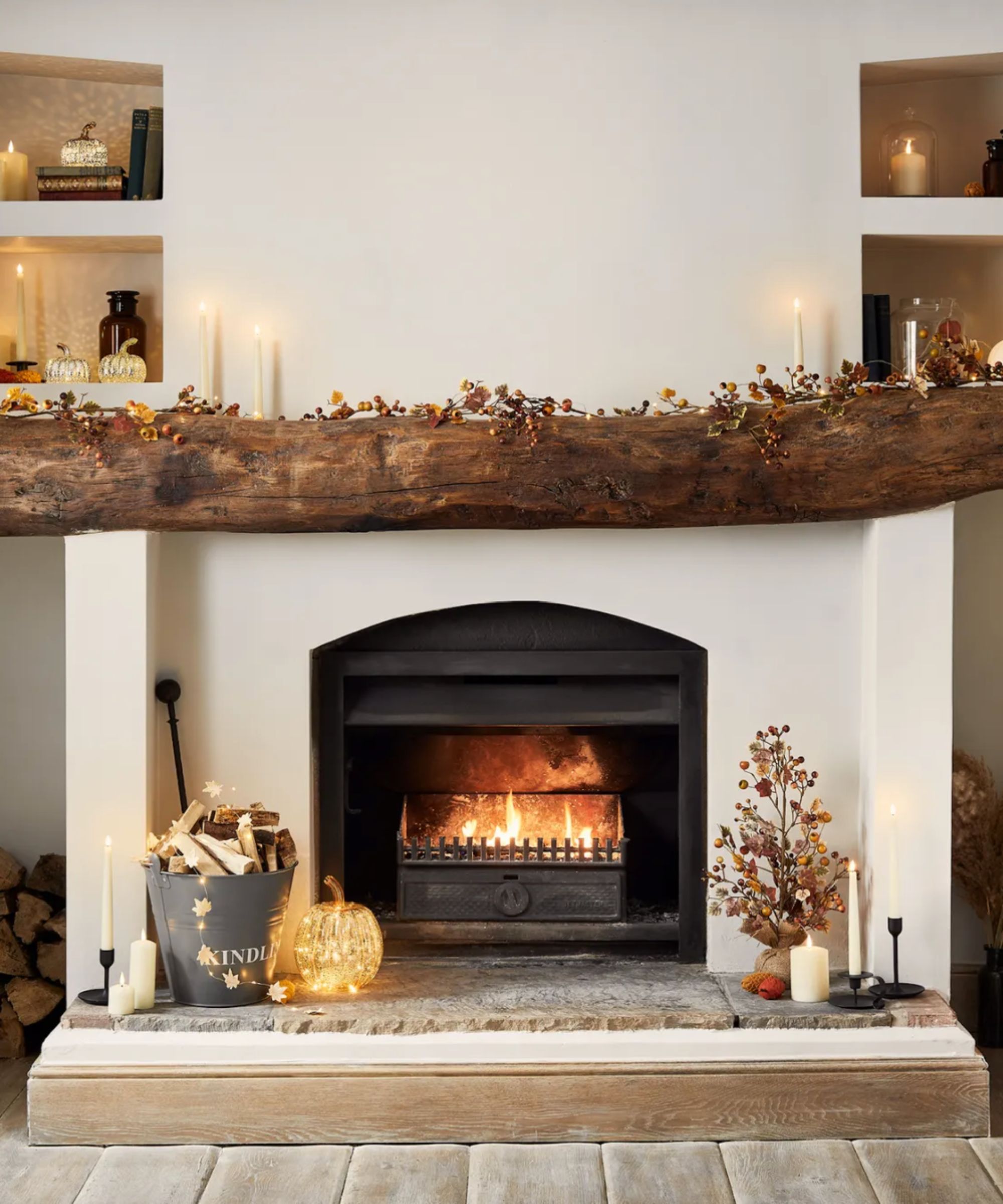
A weathered, oversized beam is one of the easiest ways to bring depth and authenticity to your open fireplace ideas. In this example from Lights4Fun, the rustic timber looks as though it has been in place for decades – its uneven edges and textured grain lending the room a lived-in, characterful feel. Paired with a black inset stove and a natural stone hearth, the result is both cosy and timeless.
And if you’re working with a log burning stove rather than an open fire, the same principle applies. Phil Wood, UK managing director of Contura, explains: “For those with a stove set into a fireplace, a reclaimed beam can be repurposed and used as a beam or stove surround, adding rustic charm and character and framing the area as the centrepiece of the room. The natural grain and texture of oak introduces an organic element that complements both traditional and contemporary interiors.”

Phil is managing director of Contura Stoves (UK) Limited. He has worked in the fireplaces, fires and stoves industry since 1985.
2. Lean into traditional fireplace design for timeless appeal
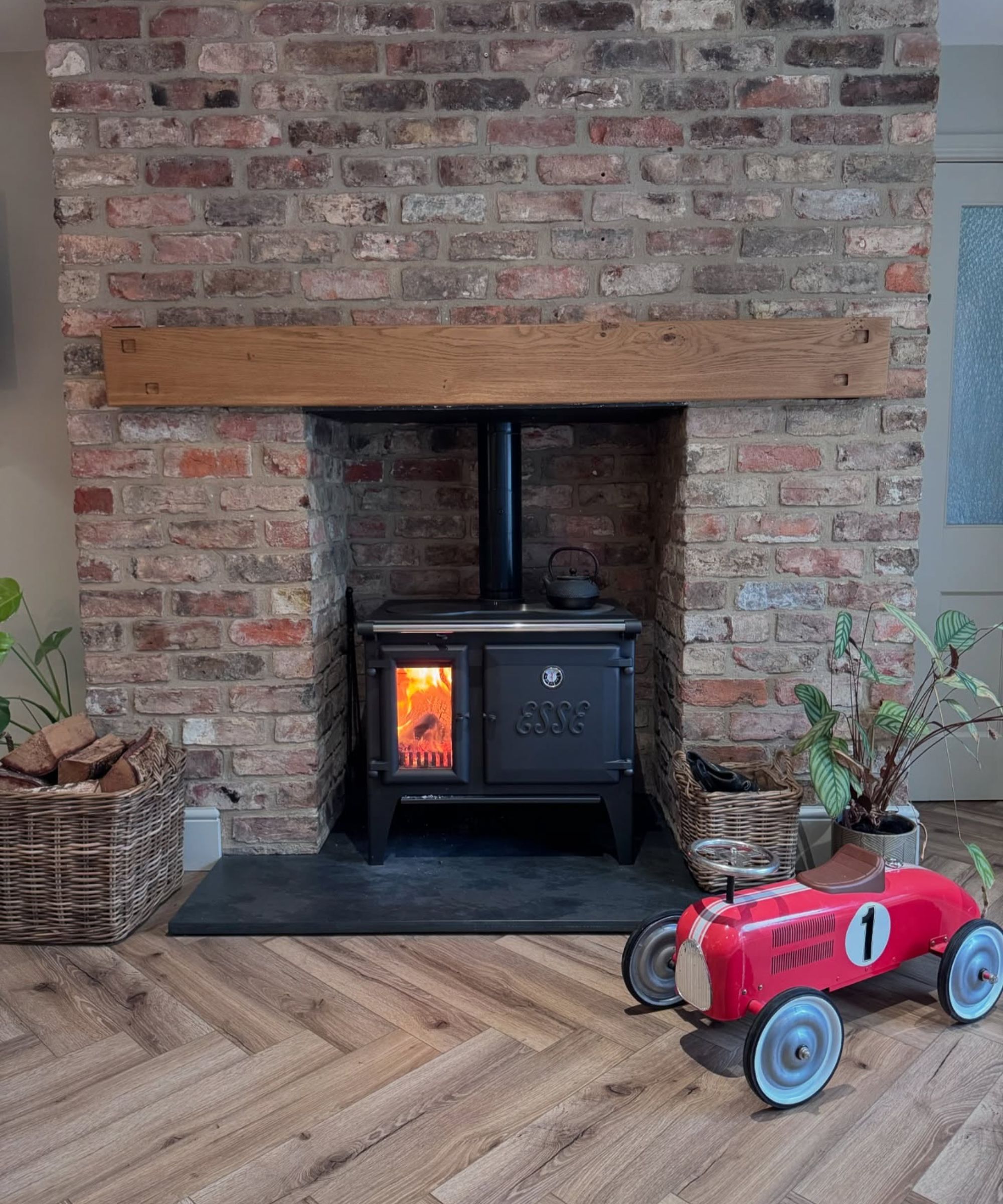
Sometimes the most effective designs are the simplest. A solid oak beam paired with exposed brickwork and a cast-iron stove is a classic combination that never goes out of style. The natural warmth of the timber offsets the rugged texture of the brick, while the stove completes the picture with a homely glow.
This kind of setup works especially well in period homes or country cottages, where keeping true to traditional details helps preserve the character of the property. Add in wicker log baskets, heritage flooring or vintage finds, and you’ll have a fireplace that feels beautifully rooted in tradition.
Bring your dream home to life with expert advice, how to guides and design inspiration. Sign up for our newsletter and get two free tickets to a Homebuilding & Renovating Show near you.
3. Choose a pale, sanded oak beam for a softer finish
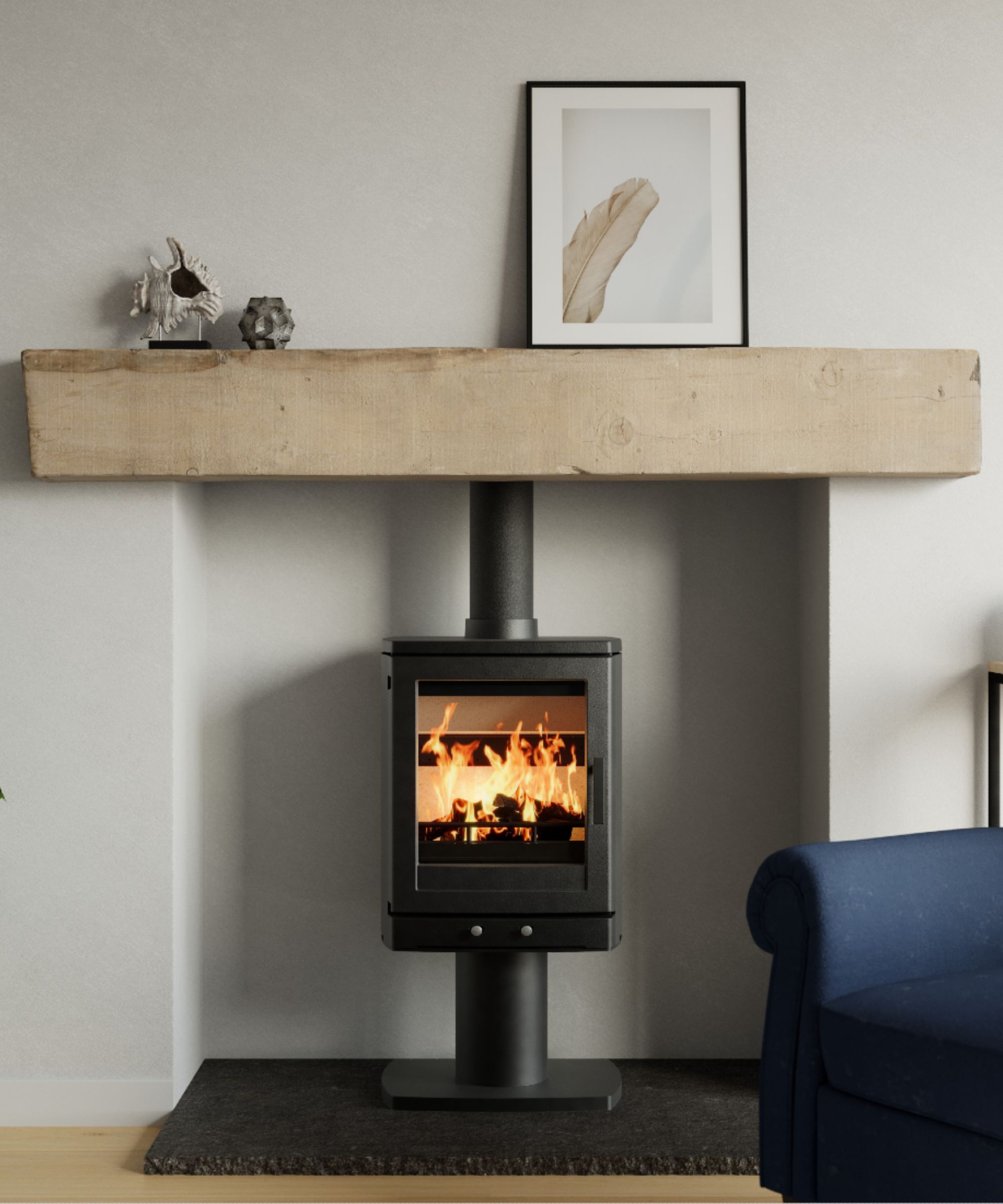
Not all oak beams need to be dark or heavily textured. A pale, sanded beam can lend a lighter touch to the fireplace, giving it a relaxed, understated feel. In this scheme by Direct Stoves, the beam’s soft, natural tones balance the sharp lines of the modern stove below.
Choosing a lighter finish is also a clever way to stop a chunky beam from overpowering the room. It works particularly well against neutral walls, where the subtle grain of the oak can stand out without dominating the space.
4. Treat and seal an oak beam to keep it stylish and compliant
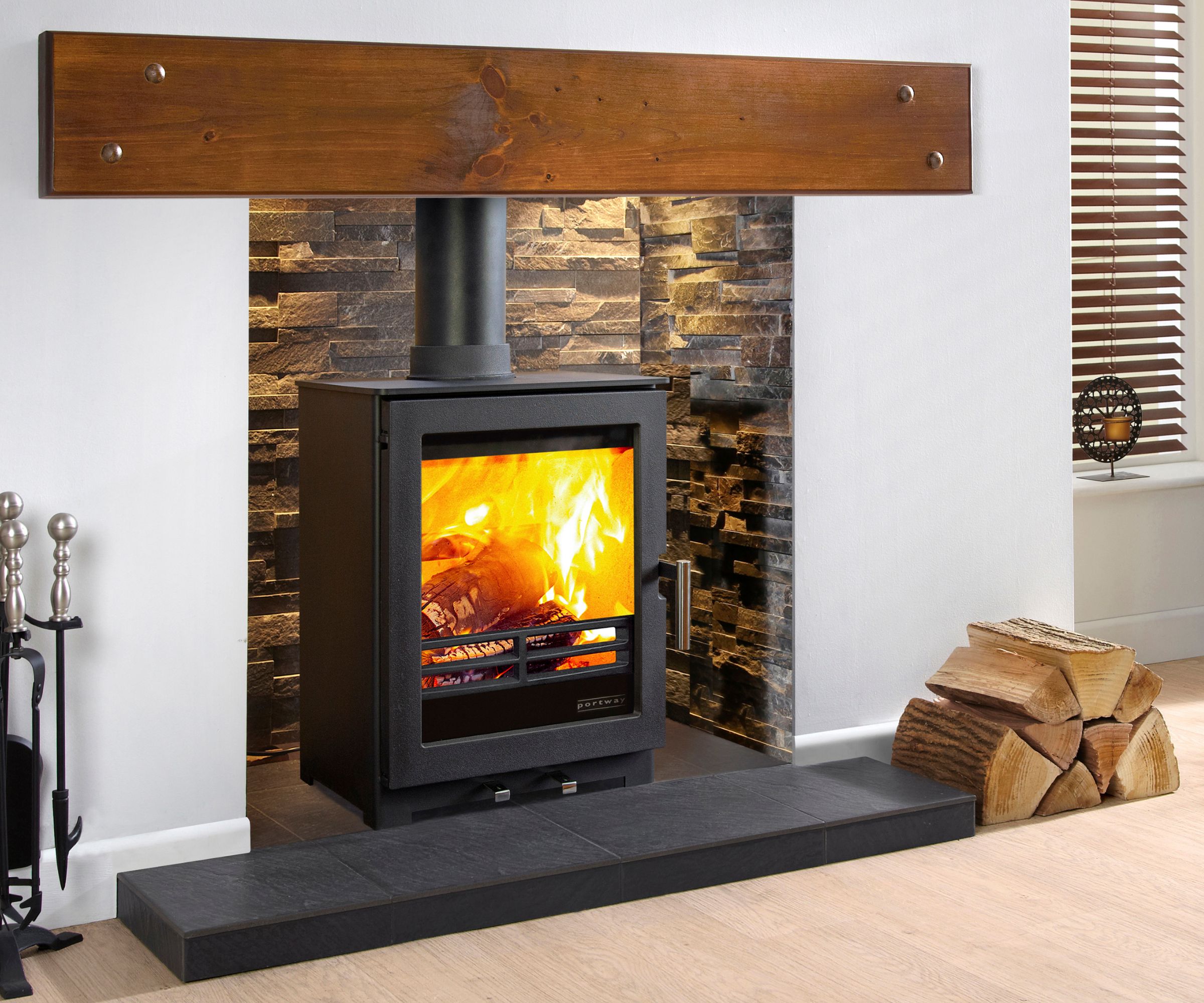
Oak beams never go out of style, but as they are a combustible material, you’ll need to think carefully about where and how they’re fitted. Not only will the right treatment keep your beam looking beautiful, it will also help ensure your fire complies with Building Regulations for log burners.
Joanna Humphreys, fire and stove specialist at Direct Stoves, explains: “Solid wood beams, such as oak, pine or walnut, are very appealing as they have a beautiful unique grain to them. However, as wood is a combustible material, you need to make sure you place it a safe distance away from the top of your stove – this should be specified in your stove manual and will be covered by Building Regulations, so make sure you adhere to it.”
“A non-combustible shield can be used to reduce distances in some cases, or composite beams or non-combustible alternatives are often used to achieve the look safely," adds Phil Wood, MD at Contura.
Once fitted correctly, regular maintenance will keep your beam at its best. A light sanding helps smooth away marks and prepare the surface, while applying a stain can completely transform its character. Follow your stain with a coat of beeswax or wood oil to nourish and seal the timber and protect it from stains and heat marks. Done regularly, this not only prolongs the life of the beam but also enhances its natural patina.

Joanna Humphreys is a fire and stove expert at Direct Stoves, an online stove retailer selling an array of wood burning, multi fuel, gas, and electric stoves.
5. Experiment with colour and faux oak beams for a modern twist
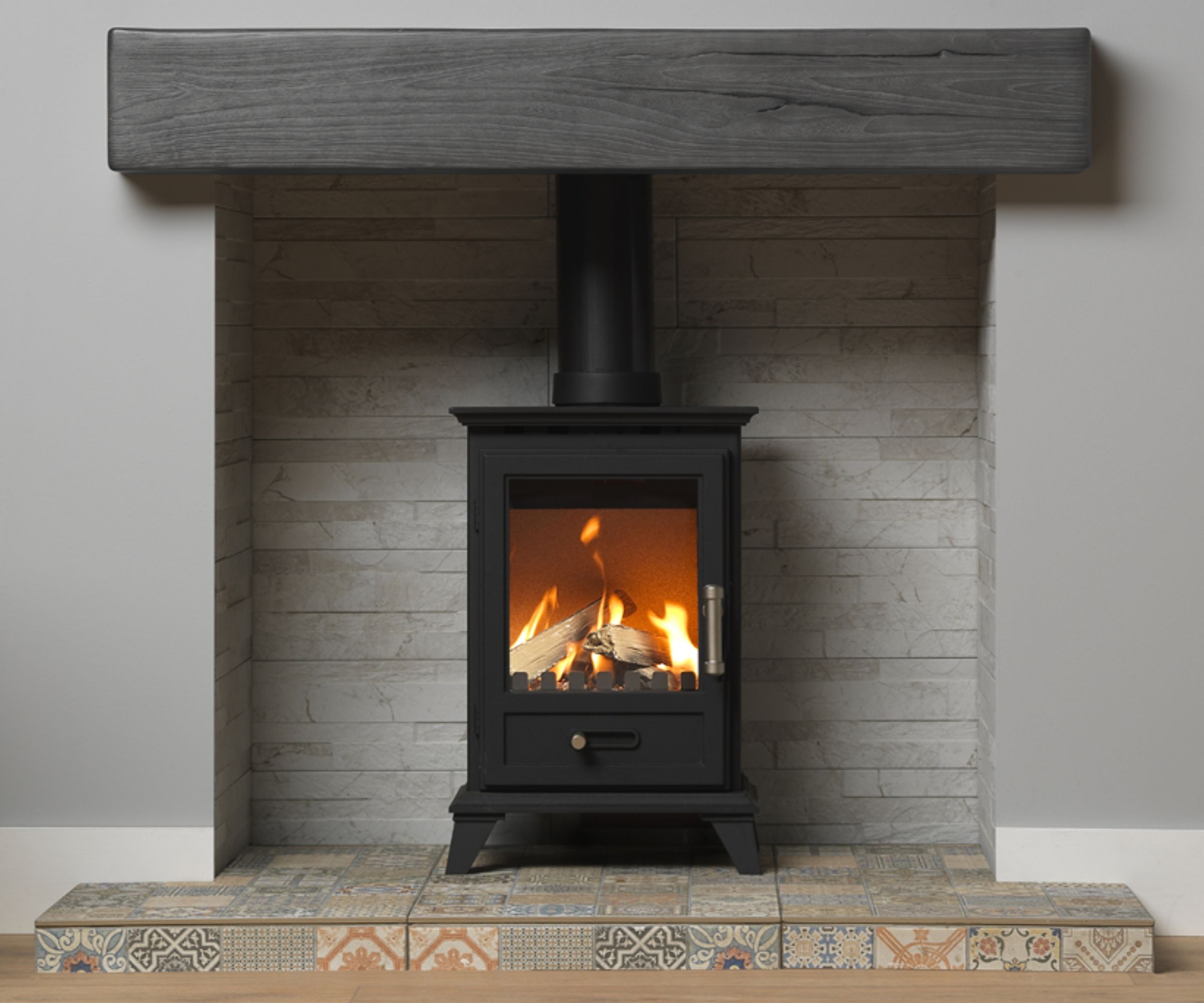
Oak beams don’t have to stick to the rustic look. A coloured or faux finish can give your fireplace a modern edge while still keeping the cosy warmth of timber. In this example, a dark-stained beam frames the stove and stands out against pale stonework for a bold, contemporary touch. Patterned tiles on the hearth add even more character, softening the contrast and giving the fireplace a playful, design-led twist.
Faux oak beams are particularly clever if you want the 'look' without the upkeep. Adam Oldfield, director at StovesAreUs, explains: “Faux oak beams are another great alternative. They’re easy to install, especially on stud walls, and don’t require the same maintenance as wood, while still providing an authentic look.”
6. Mix rustic beams with modern stoves
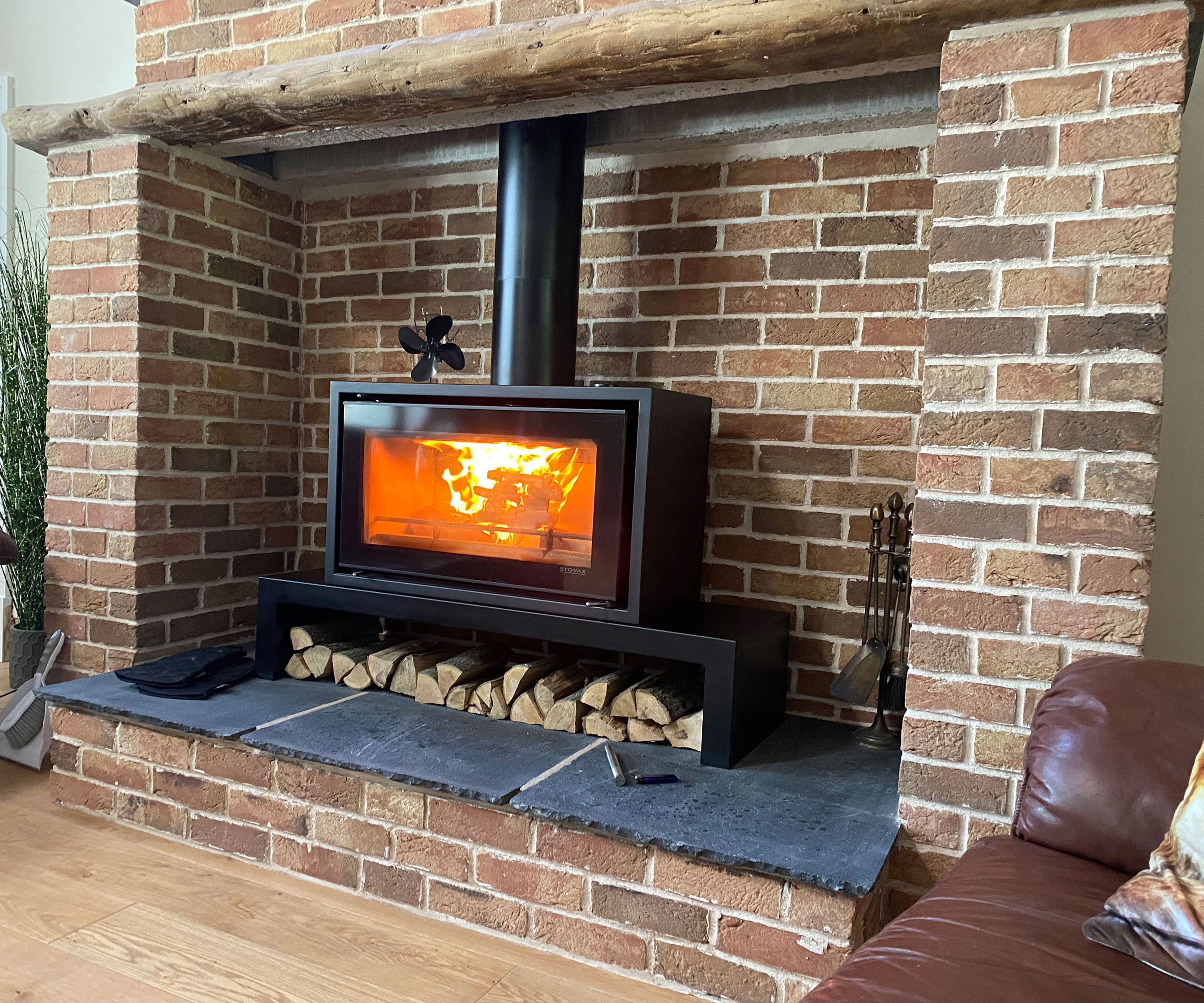
There’s something undeniably charming about a weathered oak beam against exposed brickwork. It feels as if it’s always been there. But pair that rustic backdrop with a sleek, contemporary stove and suddenly you’ve got a fireplace that feels both nostalgic and thoroughly up to date.
The beauty of this mix-and-match approach is how it celebrates contrasts: rough-hewn timber alongside clean steel and old-world character meeting modern comfort. It proves that you don’t need to commit to one style or the other to get beautiful results. Sometimes the most inviting living spaces are the ones that blend the best of both worlds.
7. Match your oak beam to other woodwork for a cohesive look
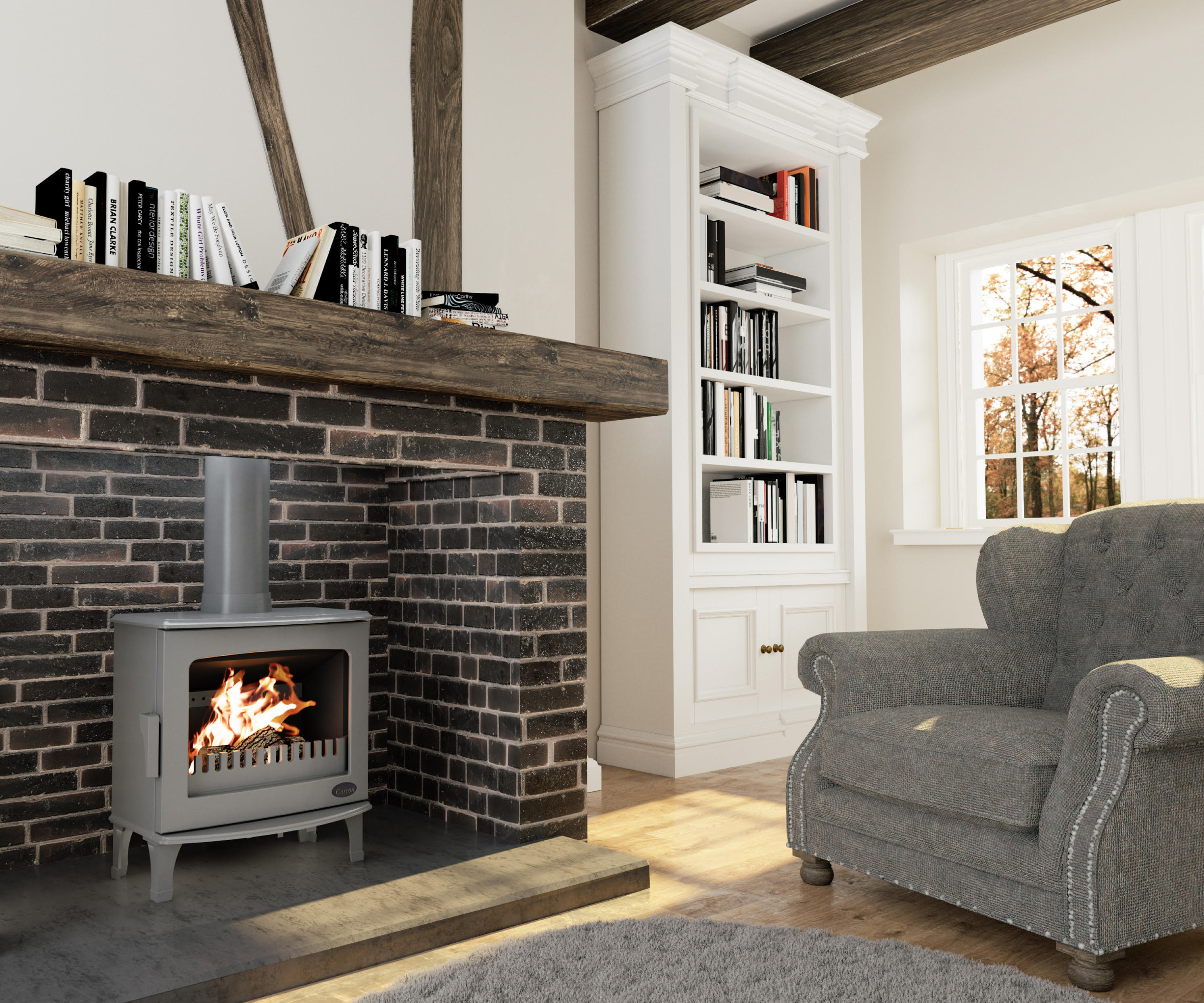
If your living room already features exposed beams or timber details, echoing the same tone and texture on your fireplace beam is a simple way to pull the whole space together. In this room, the dark-stained oak mantel mirrors the ceiling beams above, creating a sense of balance that feels intentional and design-led.
Of course, repeating materials doesn’t mean you have to stick to one look. A pale, limed oak beam can brighten up a room with lots of natural light, while a deeper rustic finish will add warmth and weight. And if you’re painting ceiling beams elsewhere in the space, choosing a mantel in a complementary shade is an easy way to keep everything feeling cohesive.
8. Keep things sleek with a simple floating beam
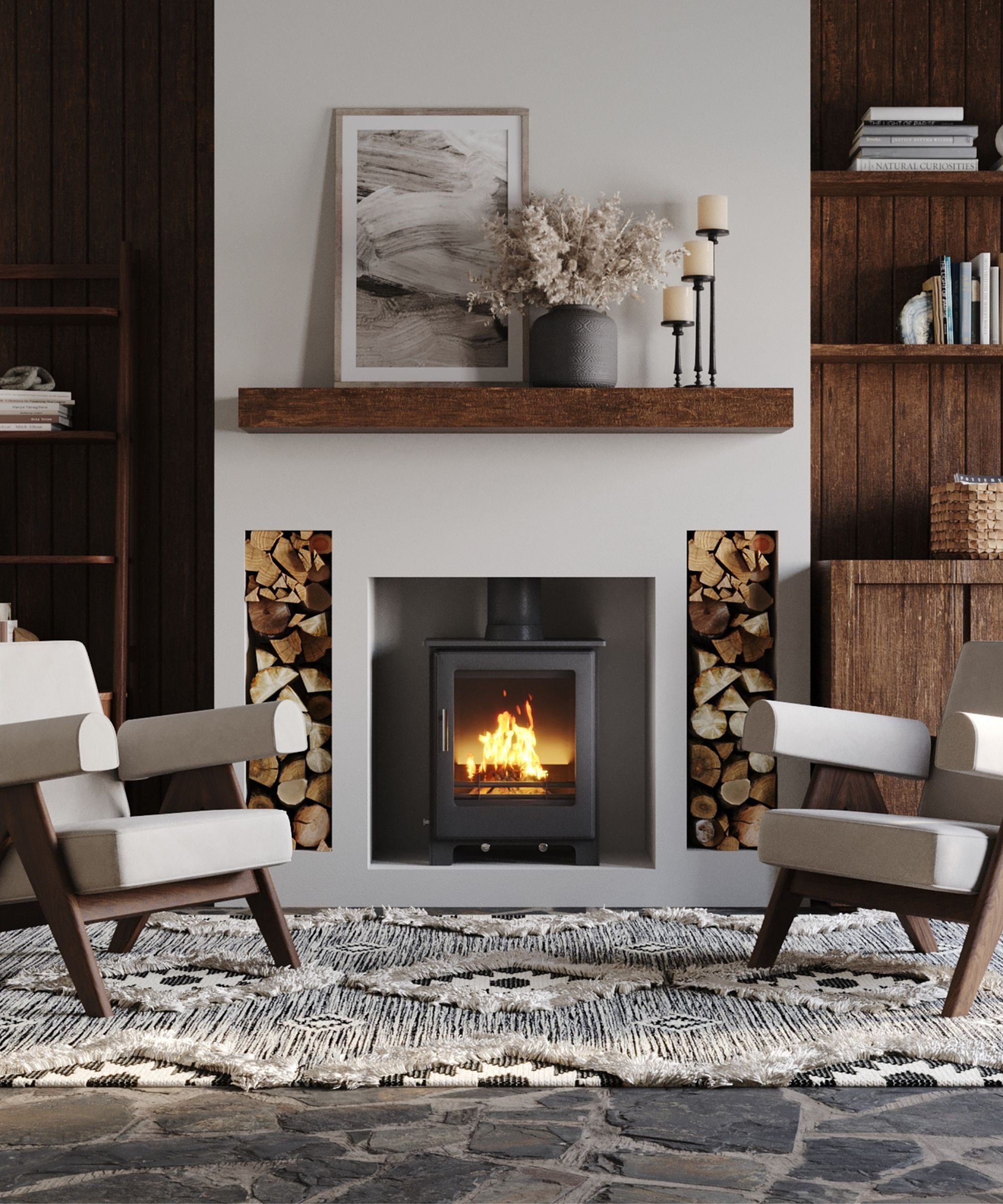
Floating beams are a smart way to give your fireplace a lighter, more streamlined finish, especially in modern living rooms where bulky log burner surrounds can feel overpowering.
Adam Oldfield explains: “A ‘floating’ oak beam, mounted without visible supports, creates a clean and contemporary look, while placing the beam directly above the fireplace opening feels more classic and grounded.”
It’s this balance of contemporary and traditional that makes floating beams so versatile. They can sit seamlessly in a minimalist living room, or be styled up with artwork or a mirror above the stove for a softer, more homely feel. And because they lack heavy brackets or corbels, they give the illusion of space – a clever trick if your fireplace is in a small or awkward terrace living room.
9. Embrace natural edges for a rustic statement
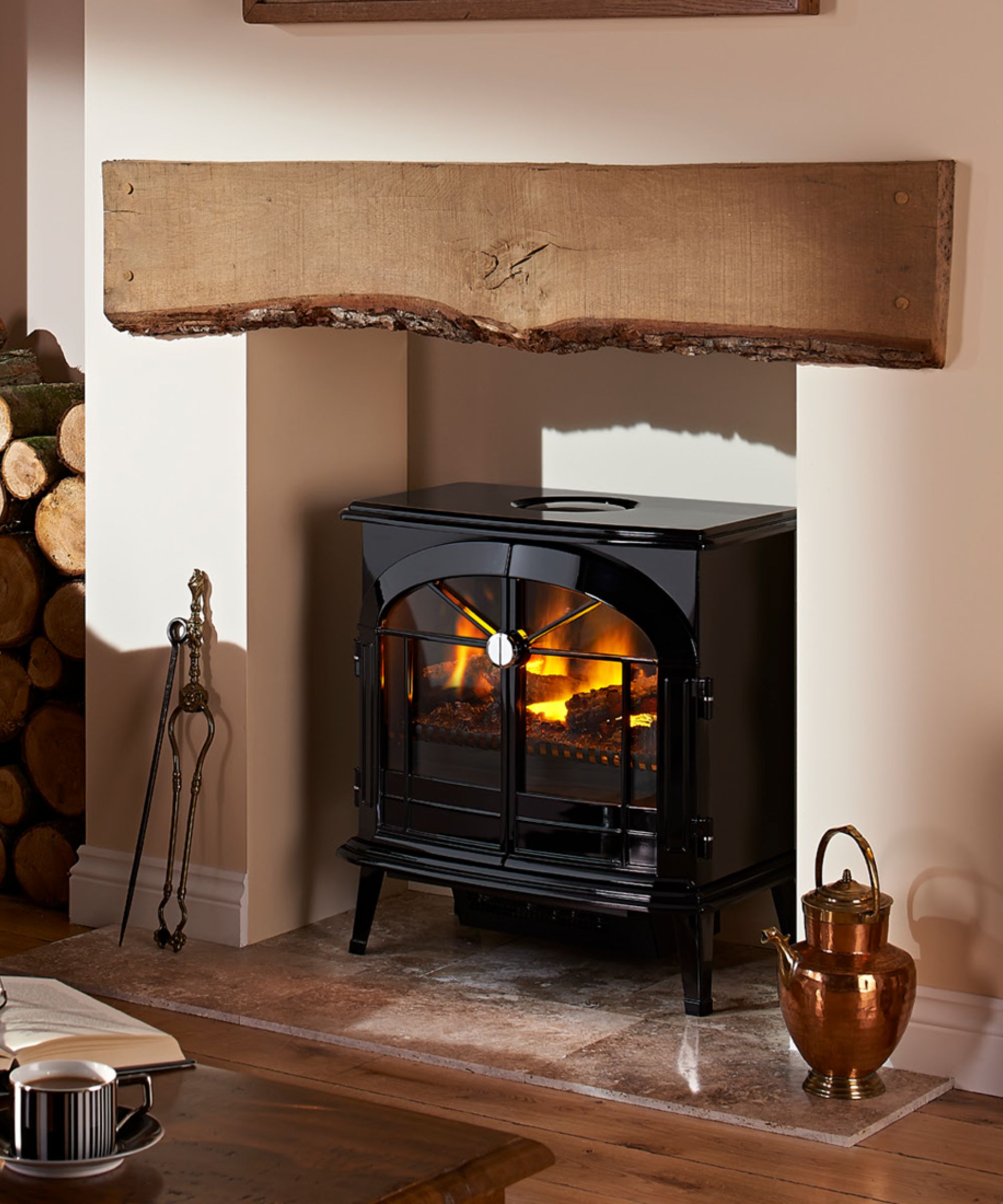
If you love a natural, lived-in feel, choose an oak beam that shows off its raw edges and imperfections. The bark-edged design pictured here brings real charm and authenticity to the simple log burner, making it feel instantly more characterful.
These rustic finishes work particularly well when styled with copper or brass accents, which highlight the warmth of the wood grain above. You could also add depth by tiling behind a log burner. Patterned tiles bring a playful touch, while a stone or slate hearth will keep the look earthy and traditional.
10. Pair a double-sided log burner with an oak beam for the ultimate focal point
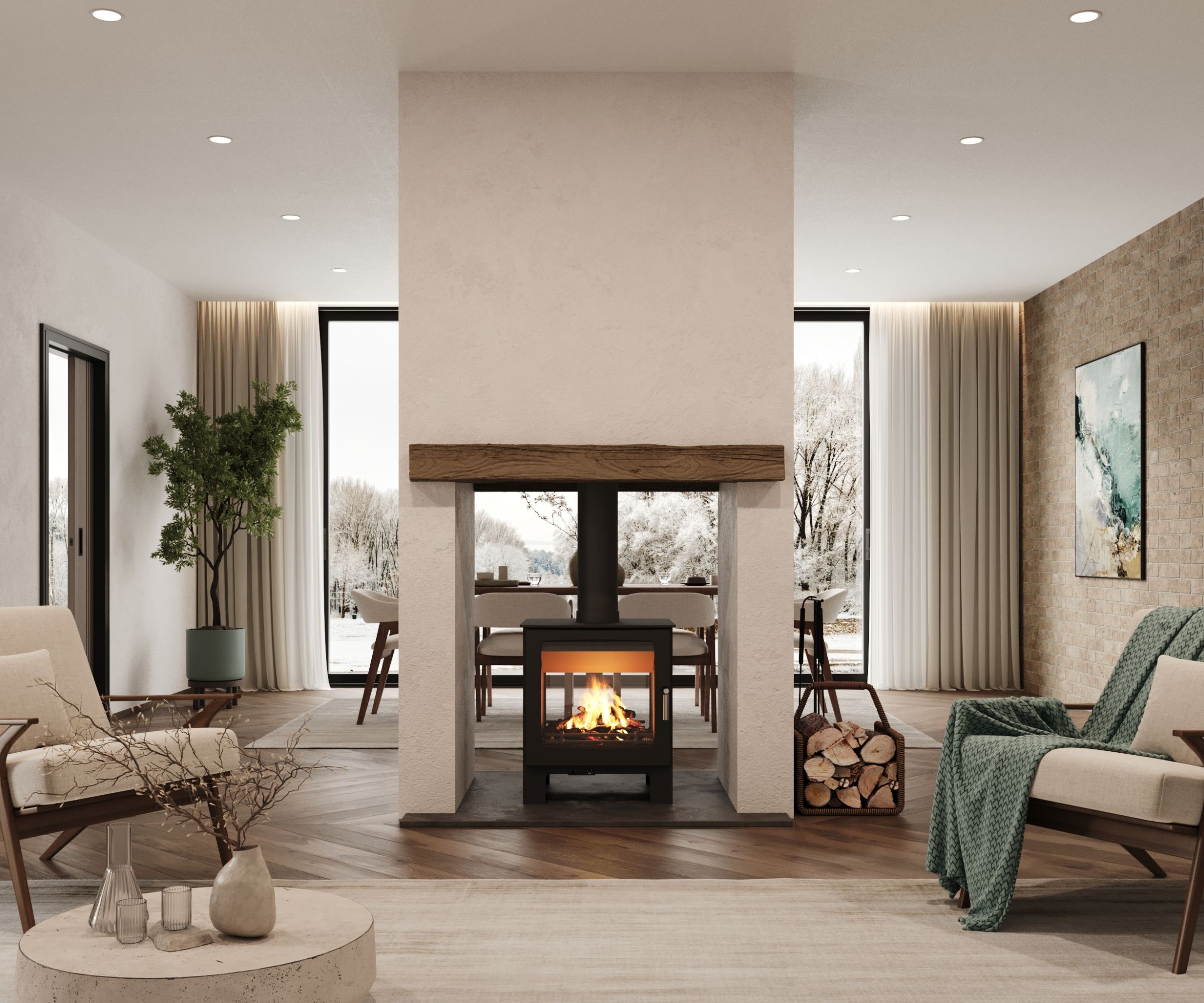
A double-sided log burner is one of the most stylish ways to zone an open-plan room. In this stunning setup by Mendip Stoves, the fireplace connects the living area with the dining space, creating warmth and atmosphere on both sides.
This design proves that oak beams aren’t just for traditional fireplaces – when teamed with a modern freestanding stove and crisp plasterwork, they add a layer of texture that softens contemporary design and makes the space feel more 'lived-in'.
For the most cohesive effect, consider mirroring the look with a matching oak beam on both sides of the log burner. This creates balance across the two rooms and ensures the fireplace feels like a single, seamless feature rather than two separate openings.
Thinking beyond the living room? A fireplace or log burner could transform other areas of your home too. Explore whether a log burner works in a kitchen, and discover how to choose the right size stove to keep your space perfectly warm.

Gabriella is an interiors journalist and has a wealth of experience creating interiors and renovation content. She was Homebuilding & Renovating's former Assistant Editor as well as the former Head of Solved at sister brand Homes & Gardens, where she wrote and edited content addressing key renovation, DIY and interior questions.
She’s spent the past decade crafting copy for interiors publications, award-winning architects, and leading UK homeware brands. She also served as the Content Manager for the ethical homeware brand Nkuku.
Gabriella is a DIY enthusiast and a lover of all things interior design. She has a particular passion for historic buildings and listed properties, and she is currently in the process of renovating a Grade II-listed Victorian coach house in the West Country.
